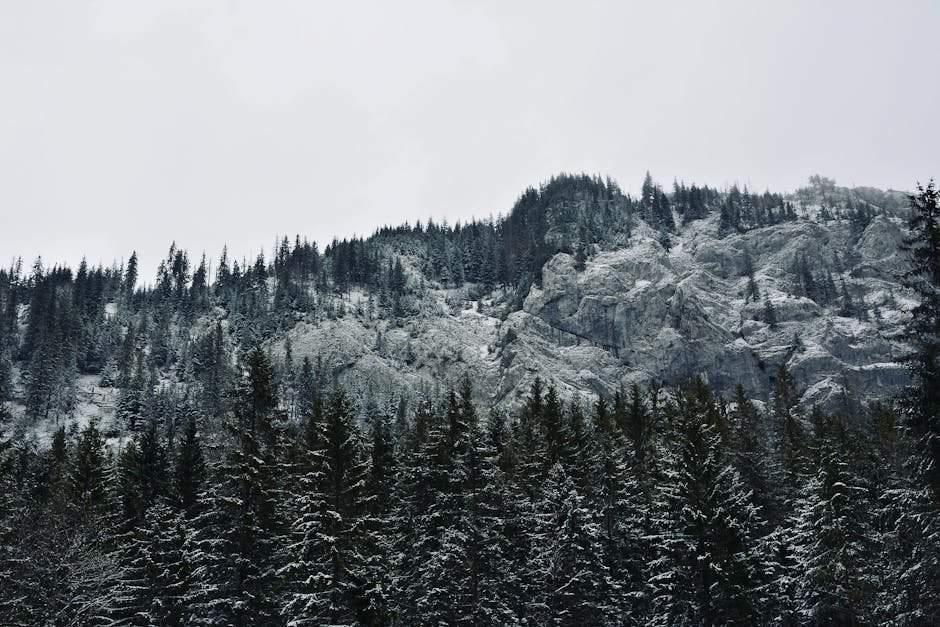Preparing for Changing Weather Conditions in Baxter State Park for Climbers
The allure of Baxter State Park is undeniable for climbers who thirst for challenge and beauty. However, this majestic Maine wilderness demands respect for its ever-changing weather conditions. Navigating through these unpredictable elements can be the difference between a fulfilling adventure and a harrowing ordeal. Armed with knowledge and proper gear, climbers can embrace the park’s unpredictable nature while ensuring safety and enjoyment.
Understanding Baxter State Park's Climate
Baxter State Park's climate is as diverse as its terrain, featuring a range of weather conditions that can shift dramatically within a single day. The park experiences a significant variance in temperatures and precipitation throughout the year, influenced by its elevation and geographical location. Summer months might bring warm days, yet the weather can quickly turn cold and misty, especially at higher elevations. Winter presents its own set of challenges, with heavy snowfall, ice, and extreme cold temperatures being common. Understanding these patterns is crucial for climbers who need to prepare for anything nature throws their way.
It’s not uncommon for climbers to experience all four seasons in a single visit. This variability demands meticulous attention to weather forecasts and a flexible mindset. Pre-climb research on historical weather conditions, alongside real-time weather updates, can greatly aid in planning successful and safe routes.
Essential Gear for Weather-Prepared Climbing
Equipping oneself with the right gear is paramount for facing the capricious weather of Baxter State Park. A layered clothing strategy is advisable, allowing for quick adjustments according to temperature changes. Synthetic or wool base layers that wick away moisture, coupled with insulating mid-layers and waterproof, windproof outer shells, offer the versatility needed for the park's fluctuating conditions.
Climbers should also consider the necessity of specialized gear such as ice axes and crampons for winter ascents, along with sun protection for the unexpectedly harsh sun exposure found above the treeline in the warmer months. Equally important are non-clothing items like a weather-resistant tent, a reliable weather radio, and navigation tools that can prove indispensable in the face of changing weather.
Navigating Seasonal Weather Challenges
Each season in Baxter State Park presents specific challenges for climbers. Spring’s melting snow and ice create slippery conditions and high water levels in rivers and streams, making some routes risky or inaccessible. Climbers in this season must be prepared for wet conditions and potentially unstable snowpack.
Summer offers more stable weather but is not without its hazards, such as sudden thunderstorms that can lead to dangerous lightning strikes and flash flooding. The fall, while offering some of the most stable and pleasant climbing conditions, requires vigilance for early snowfalls and rapidly decreasing temperatures, especially in late October and November.
Winter, arguably the most challenging season, demands the highest level of preparation and skill. With the park's heavy snowfall, sub-zero temperatures, and shorter days, climbers must be well-versed in winter survival techniques and avalanche awareness.
Safety Tips for Sudden Weather Changes
Sudden weather changes in Baxter State Park can present immediate dangers to climbers. Key to safety is constant vigilance and the willingness to turn back if conditions dictate. Always inform someone of your climbing plans and expected return time.
Regularly check weather forecasts leading up to your climb and be prepared to adjust your plans accordingly. Additionally, pack a well-thought-out emergency kit that includes first aid supplies, a whistle, a fire-starting mechanism, extra food and water, and emergency shelter. Having these essentials can make a significant difference in the face of unforeseen weather changes.
Lastly, gaining knowledge and skills in weather-related survival tactics and first aid can prove invaluable. Consider taking wilderness first aid courses and learning about weather pattern recognition.
As we return from the heights of Baxter State Park, let us carry with us not just the thrill of the climb but also a heightened respect for nature's dynamism. Whether basking in the sun at the summit of Katahdin or navigating a sudden snow squall, remember that the key to conquering the weather of Baxter State Park lies in preparation, awareness, and adaptability. Embrace the variability as part of the adventure, and let the weather guide, not deter, your climbing journey.


